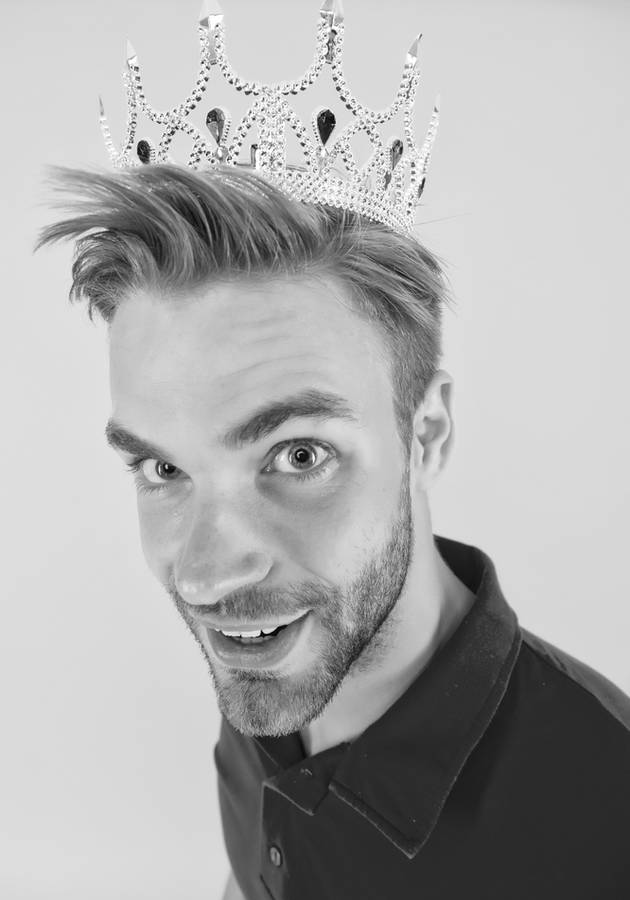Unless you live alone in a place without electricity far from the city, you probably hear constant noise coming from the radio, smartphones, computers, or other sources. Even if you isolate yourself from outside sounds, you quickly become trapped in the inner chatter of your thoughts. In ‘’Silence,’’ Buddhist Zen Master Thich Nhat Hanh teaches us how not to be carried away by the noise around and inside us and approach life with more gratitude and calmness. So, get ready to embrace the power of silence.
Practice mindfulness
People are peculiar creatures. We often regret the past and look back at old memories only to go through the pain we have already experienced again and again. We are often fearful and anxious about the future, even when we have our basic needs met. All this worry prevents us from appreciating things we usually take for granted, such as the fact that we are alive and walking on the Earth every day. If you think a bit, we can spend the rest of our lives only admiring the fact we are given a chance to live this life. Unfortunately, the noise in our minds is preventing us from doing so.
Hanh says we will be able to appreciate our realities more only when we return to our ‘’basic condition’’ and free ourselves from thinking, fears, anxiety, and longings. According to him, the only way to achieve inner silence is through practicing mindfulness. If we take only two or three seconds to concentrate on our breathing, we can awaken to the fact that we exist here and now. The noise within us disappears, leaving us free of worries and ready to respond to the beauty around us.
Practicing mindfulness does not require you to be alone. Being silent together is particularly dynamic and healing. In a retreat center in southeast France where Hanh lives, people practice being together in the present moment every day by concentrating on doing only one activity at a time. For instance, when they are eating, they focus only on that. They are not eating and talking or doing something else. ‘’In this way,’’ Hanh writes, ‘’we are free to hear the deepest call of our hearts.’’
By quieting the unnecessary noises, mindfulness allows you to look into your soul to find answers to some of the fundamental questions you ordinarily don’t have time to answer, such as, ‘’Who am I?’’ or ‘’Why am I here?’’ Furthermore, in silence, you will realize that you can stop chasing happiness because it already exists in your life. You only need to be quiet enough to hear its calling.
Four nutriments
Hanh says, ‘’All the sounds around us and all the thoughts that we’re constantly replaying in our minds can be thought of as a kind of food.’’ According to Buddhists, the things we read, the shows we watch, our conversations, worries, and anxieties all fall into one of the four ‘’food’’ categories: edible food, sense impressions, violation, and individual and collective consciousness. The food from each category can be nourishing or toxic, so we need to be mindful of what and how much of it we are consuming. ‘’Our awareness is the key to our protection,’’ Hanh emphasizes.
Everything we take in with our senses and mind—everything we see, smell, touch, taste, or hear belongs to the category of sensory food. Maybe even more than edible food, sensory food affects how we feel. On many occasions, its purpose is to keep our attention away from our suffering. You probably consume sensory food in this manner too, when you are in pain. Maybe you watch a movie or play a video game to run away from your discomfort.
So much of the inner and outer noise hides our third source of energy—our will, motivation, and desires. We often do things to fulfill someone else's wishes or because we are unaware of our deepest desires. If you have space and silence to listen deeply to yourself, you may realize you want to bring love and compassion to others. Hanh says that if you have a clear understanding of your purpose, it can be a powerful source of joy in your life.
Thoughts and feelings coming from individual consciousness can also be toxic or nourishing. For example, if you have angry thoughts, you are consuming unhealthy consciousness. On the other hand, if you are compassionate, loving, and full of forgiveness, your mind feeds itself on these positive traits.
Like individual consciousness, collective consciousness can be healing or destructive. It feeds you well if you are, for example, with loving friends or family. In case you are surrounded by violence, fear, anger, or despair, you will consume negative energy, even if you don’t want to.
Stop and let go
Like cows that re-chew their food multiple times after swallowing, we repeatedly ruminate on our thoughts—unfortunately, mostly the negative ones. Don’t get it wrong—it’s not that thinking itself is necessarily bad. Productive thinking nourishes our minds. Negative thoughts, on the other hand, might cause harm, not just to us, but to people around us as well.
Buddhist psychology identifies two parts of our mind—store consciousness and mind consciousness. Store consciousness is like a basement where all the seeds of your thoughts and emotions are stored. Whenever you ‘’water’’ them, they grow and appear in the living room—the upper part of your mind. If your living room is full of seeds of mindfulness or compassion, you enjoy its company. However, unwholesome ones grow into weeds that make your living room crowded. Take watching the TV as an example. It often touches our seed of craving, so we should be careful not to let it transform itself into the energy of craving.
Ruminating on our painful past experiences can also foster the growth of anger, hatred, despair, and suffering. For instance, if you were abused as a child, every time your mind goes back to that event, you experience the abuse all over again. So, for healthy consciousness, we should encourage the growth of wholesome seeds that manifest in the mind consciousness as positive energy. The key to breaking the habit of negative thinking and getting in touch with our inner and outer wonders is mindfulness. It teaches you the art of nonthinking and reclaims your ability to be silent and peaceful in the present moment.
As we already mentioned, mindfulness is not about sitting still, but clearing your mind of thoughts by focusing only on breathing. If walking generally relaxes you, you can meditate while walking. You breathe in, take a step, and then breathe out. It may take longer for you to focus your attention in the beginning. However, if you are persistent, you may get in touch with the miracles around you quickly, anytime, anywhere. Whether you are cooking, working, brushing your teeth, or eating, you can enjoy the inner silence.
Silent actions
‘’Silence is ultimately something that comes from the heart, not from any set of conditions outside us,’’ Hanh says. So, experiencing the power of silence does not happen just when we are not talking or doing things, but when we are not disturbed inside.
Silence itself is not inevitably beneficial, especially in the cases of restriction of freedom of expression. For example, when a parent forces children to be silent or one member of a household forbids others to talk about sensitive topics. This type of oppressive silence is unbearable and makes the situation even worse.
When combined with action, silence can achieve powerful results. Perhaps you have heard of Vietnamese monks who immolated themselves during the war in the 1960s. What they were trying to say was that there was suppression, discrimination, and suffering in Vietnam. As Hanh describes, ‘’They used their body as a torch in an effort to create awareness of that suffering.’’ One of them was Thich Quang Duc who first tried to stop the persecution of Buddhists by writing compassionate letters to the president. Since this brought no improvement, he drove himself to an intersection in Saigon, got out of the car, poured gasoline over his body, and set himself on fire. Several hours later, the image of him sitting engulfed in flames was available everywhere in the world. A month or two later, a military coup brought the regime down, ending the policy of religious discrimination and persecution.
Another Vietnamese monk, whose nickname was the Coconut Monk, delivered a peace message by settling in and sleeping outside the presidential palace gate. He had a cage with a cat and mouse that learned to be friends. When one guard asked him, “What is your purpose in being here?” The Coconut Monk said, “I want to show the president that even a cat and a mouse can live peacefully together.”
If you want to change something and do not achieve any results by talking, consider acting silently. It doesn’t have to be drastic, as in the cases of Vietnamese monks. However, if you are strongly determined, your silent action can deliver a message more effectively than words.
Go back to the island within yourself
When we come into our home, we almost instantly relax because it is a place where we can be ourselves. We feel warm, comfortable, safe, and content. But, is the place where you live really your home?
Hanh says our true home is what Buddha called ‘’the island of self.’’ It is a peaceful place inside us that we can find if we turn off our internal chatter. Every time you feel uncomfortable, sad, anxious, or worried, you can calm yourself by going back to your real home—the island of mindfulness. Imagine how rewarding it is to have a place that offers you comfort at any time, no matter whether you are walking, breathing, sitting, or eating. The more often you practice mindfulness, the easier it will be for you to reach the island of self.
When the last illness struck Buddha, he knew many of his disciples would suffer when he died. Therefore, he taught them to deal with their suffering by taking refuge in the island of self. In fact, Hanh says conscious breathing lets you discover the teacher within, directing you toward your true home.
When you practice mindfulness, you are practicing solitude and being in this singular moment. Even if you can do it while being with others, it is more challenging than being solitary somewhere without people. Therefore, you should first practice solitude when you are physically alone, then try to do it amid a group. ‘’It’s simple,’’ Hanh explains, ‘’to really relate to the world, you have to first go back and relate to yourself.’’
In the retreat center where Hanh resides, they use the song ‘’The Island of Self’’ as a guided meditation. You can try reciting it too if you need help concentrating. It goes like this:
Breathing in,
I go back
to the island
within myself.
There are beautiful trees
within the island.
There are clear streams
of water; there are birds,
sunshine, and fresh air.
Breathing out,
I feel safe.
I enjoy going back
to my island.
Final Notes
Hanh’s technique for achieving inner silence and calmness comes down to one sentence: stop, let go, and breathe. Although it might sound simple to perform these actions, it turns out quieting our inner chatter is one of the most challenging things to do. For this reason, Hanh’s guidance is of extreme value for discovering a place of quiet in this world full of noise.
12min Tip
Have you ever tried meditating? If you haven’t, give it a chance by practicing mindfulness for several seconds every day. You might be surprised how your life will quickly change for the better!





























